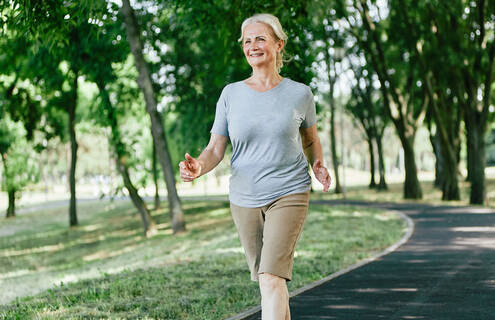
Balance problems are a big reason why older people fall, and falls are the leading cause of injury for people over 65 years old.
Many people start to lose their balance as they age and become prone to falling.
But it does not have to be that way, says Parminder Padgett, PT, DPT, a neurological clinical specialist and physical therapy clinical supervisor on the physical medicine and rehabilitation team at Dartmouth Hitchcock Medical Center.
Specific strength and balance exercises can help lower the risk of falling in your later years.
What causes loss of balance
Balance problems can result from a range of issues, including loss of muscle mass. Other factors include medications, disorders, inner ear problems, medical conditions, and alcohol, says the National Institute on Aging.
Some of these conditions can cause dizziness, which is more prevalent in older people and women. Dizziness can lead to falls. If you have persistent dizziness, talk to your doctor.
"It could be a serious issue," says Padgett.
Age and your vestibular system
As with most systems in the body, aging causes a degenerative effect within the vestibular system—a sensory system in the inner ear that helps you maintain your balance and spatial orientation.
This system includes small hairs in your ears that are activated by your movement and that, in turn, send messages to your brain.
At about 40 years old, those hairs start to deteriorate, says Padgett.
"As we age, our muscles atrophy and their connection to our brain and the vestibular system weakens," she says.
When the vestibular system weakens or becomes damaged, balance problems can arise.
Age and the loss of muscle mass
As early as your 30s, evidence suggests that skeletal muscle mass and skeletal muscle strength decline, with up to 50% of your mass lost by the time you are in your 70s.
This loss of muscle mass is called sarcopenia, which negatively affects balance and increases the risk and fear of falling, especially in the elderly.
Subscribe to the Living Better newsletter
Your trusted resource for reliable and up-to-date health and wellness information in the Northeast. Get it delivered to your inbox every other week.
How to avoid becoming prone as you age
One way to make yourself less prone to falling is to work to increase your muscle mass and strength. Resistance training is the best way to do that. Also helpful is more physical activity and a healthy diet that includes ample protein intake.
"But you can be a marathon runner and still have a sedentary lifestyle," cautions Padgett.
So rather than stick to one form of daily exercise, your goal no matter your age should be to continue using many muscles throughout your day.
Padgett recounts a time when she was in a parking lot with her young children. They jumped onto a cement barrier. By doing that movement, her children were using muscles and stimulating their vestibular system in a manner that she was not.
"We are not playing like this anymore as we age. We should be moving our body," she says.
More daily exercises to consider
Even as your mobility decreases, more simple forms of exercise also can help maintain your balance as you age. These should be practiced as your body and health allow. If you are managing health issues, you should talk to your medical provider to ensure what you do is safe.
To demonstrate these exercises, Padgett teamed up with her colleague, Physical Therapist Julia Noreika, PT, DPT. If you are interested in trying them, you can follow along on this YouTube video or forward the link to a loved one.
And whether you are young or old, you should consider working on your balance through exercises like these. Even small efforts, like balancing on one foot while brushing your teeth or not sitting too long in your chair, can stimulate those hair cells in your ears while engaging your muscles.
For other ways to help stay fit and balanced as you age, Noreika and Padgett recommend checking out these organizations:
For more information on dizziness, read "A Case of Getting Dizzy."


